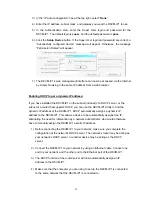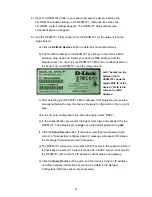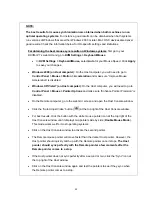
3 Usage
3.1 Prerequisites
The DKVM-IP1 features an embedded operating system and applications that support
two standardized interfaces – HTTP/HTTPS and Telnet. This chapter will describe both
these interfaces in detail, as well as how to use them. Both interfaces are accessed
using the TCP/IP protocol family.
■
HTTP and HTTPS
Full access is provided by the device’s embedded web server. The DKVM-IP1
environment can be managed completely by using a standard web browser. You can
access the DKVM-IP1 by using the non-secure HTTP protocol, or by using the
encrypted HTTPS protocol. For security purposes, we suggest using HTTPS whenever
possible.
■
Telnet
A standard Telnet client can be used to access any device that is connected to
the DKVM-IP1’s serial port (RS-232) in terminal mode.
3.1.1
HTTP as the Primary Interface
The primary interface of the DKVM-IP1 is the HTTP web interface. This will be covered
extensively in this chapter. Other interfaces will be addressed in sub-topics.
The “Host Console” window is the redirected view of the Host screen that is displayed in
a window on the Remote computer. In order to open the Host Console window of your
managed Host system, the browser must support version 1.5 or above of the Java
Runtime Environment. If the browser has no Java support (such as the browser on a
small handheld device), you can still manage your DKVM-IP1 by using the administration
forms displayed by the browser itself.
29















































